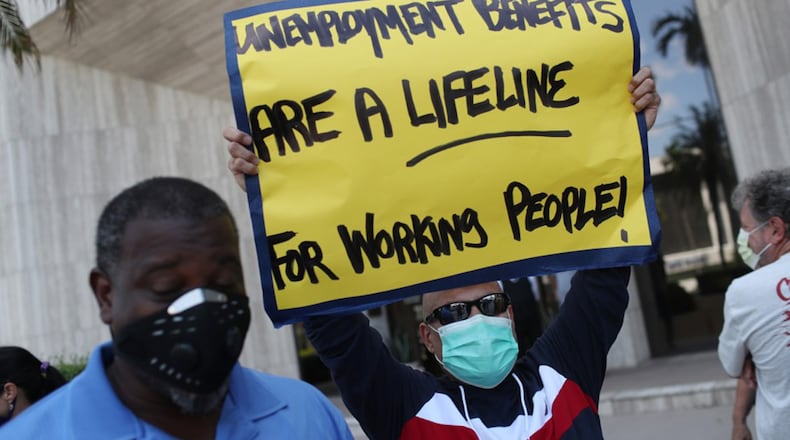More than 95% of these claims had multiple fraud indicators, state officials say. About 1,700 were for dead people. Others had fraudulent IP addresses and bank routing numbers, or invalid email addresses.
It’s unclear how much was fraudulently paid out, state officials said.
ODJFS Director Kimberly Hall said that she is deeply sorry for anyone whose legitimate claim was held up, but ”we firmly believe the majority of these claims are fraudulent.”
Notifications went out this week to 237,000 applicants asking for more information to verify their identities.
To handle this effort, ODJFS hired an additional 80 employees and reassigned 185 other workers. They hope to have a handle on how many claims are legitimate within 30-45 days.
“Unfortunately, there are criminals hoping to take advantage of the COVID-19 emergency at the expense of honest Ohioans who have earned their benefits,” said Hall. “We regret that legitimate claimants have been caught up in this fraud scheme, but we are charged with maintaining program integrity so that we can preserve benefits for those who need them.”
ODJFS spokesman Bret Crow said they suspect the perpetrators are “sophisticated crime rings that are able to access stolen identities.”
Media reports suggest more than a dozen states have seen similar fraud attempts. The New York Times reported in May that the U.S. Secret Service was investigating the potential involvement of a Nigerian fraud ring.
The accounts ODJFS froze are for Pandemic Unemployment Assistance, a federal expansion of unemployment created for just this year for people who lost income because of the coronavirus pandemic but don’t qualify for regular unemployment. Payout rates are similar to regular unemployment, with a minimum of $189 a week plus an extra $600 weekly payment that ran through July.
In Ohio, 810,313 PUA claims have been filed and 493,367 approved. ODJFS has paid out nearly $4.8 billion to recipients through the program.
The PUA program “does not have all the checks and balances our regular unemployment does,” Hall said. For example, the program doesn’t require things such as an employer verifying your work history and payments can start before the applicant provides tax forms.
She said the program was created to get money out the door quickly to people like barbers and self-employed workers who needed money to make ends meet during the pandemic.
“We erred on the side of Ohioans in need,” she said.
To prevent additional fraud, new PUA claims with certain indicators will undergo a second round of identify verification, according to ODJFS.
With a note from his doctor, Riverside resident Thomas Lambert applied for PUA assistance after he had to quit his job delivering pizza during the pandemic because of his age and health. After some difficulty getting through to apply, he was approved in June.
“It was a god send,” he said. “Without that I would be hospitalized or dead by now.”
Asked about reports that fraudsters were potentially stealing hundreds of millions of dollars from a program he credits with saving his life, Lambert said: “I don’t like that at all.”
About the Author

